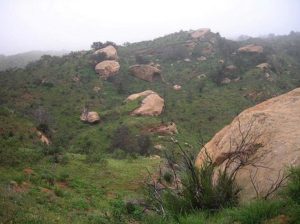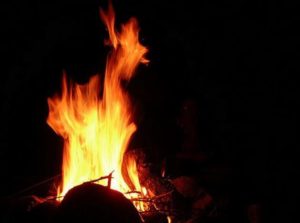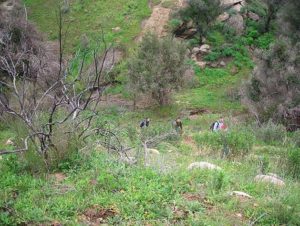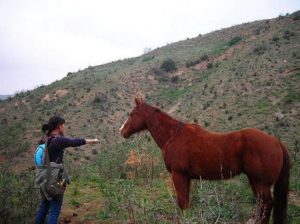Sept. 21, 2015 NBC4 I-Team segment about this report
LA’s Nuclear Secret: Camp Cover-Up
http://www.nbclosangeles.com/investigations/I-Team-LAs-Nuclear-Secret-Camp-Cover-Up-344006382.html
P. 1/14
CEHN TO NBC4:
“With regard to your email, my concerns about possible future migration from the 1990s have proven to be unfounded, as demonstrated by hundreds of tests conducted over the past 18 years. This testing has confirmed that there has been no migration of contamination onto the current Brandeis property. Any migration would be contained on the 100 acres transferred to Rocketdyne (now Boeing) in 1998.”
[ER NOTE: This is factually inaccurate as Cehn’s has written himself over the years as examined here.]
P. 1/14
CEHN TO NBC4:
“My 1997 statement was based on the evidence we had at that time. It appears to me you are
trying to create a construct and conclusion that are not accurate. At the time, I stated that portions of the 100-acre site — not used for camp operations and ultimately sold to Rocketdyne –
– were contaminated. Given that the contamination had migrated from SSFL to parts of that 100- acre site, we were concerned that the migration might continue to other areas of Brandeis. That didn’t happen; any migration has remained on that 100-acre site.”
[ER NOTE: Factually inaccurate again.]

P. 4-5/14:
1. A. STATEMENT OF OPINIONS [of Joel Cehn in February 1997 report]
1. The Brandeis-Bardin Institute (Brandeis) property is contaminated, at both the surface and subsurface, with radiological and chemical contaminants. Radiological contaminants include tritium, strontium-90 and cesium-137. Chemical contaminants include trichloroethylene (TCE), polychlorinated biphenyls (PCBs), dichloroethylene (DCE), vinyl chloride, petroleum hydrocarbons, toluene, and polychlorinated dibenzo-p dioxins/dibenzofurans (dioxins.)
2. The levels of contamination are highest at the southern end of the property, and increase in the direction of the southern property line with Rocketdyne. All of the contaminants are also found on the Rocketdyne property and, thus, originate on that property.
3. Contaminated ground water is moving toward the center of the Brandeis property (from south to north). This groundwater is contaminated with TCE, DCE, vinyl chloride and tritium.
4. Surface water, when present, also moves toward the center of the Brandeis property. Some of this water is contaminated with tritium, strontium-90 and dioxins.
5. Soil on the Brandeis property is contaminated with tritium, strontium-90, cesium-137, PCB, dioxins, toluene and petroleum hydrocarbons. During rainwater runoff events, this soil is carried from the area of the southern property line, to central and northern areas of the Brandeis property.
6. Vegetation on the Brandeis property is contaminated with tritium, due to the plants’ uptake of contaminated groundwater via their root systems.
P. 11/14: Map shows Cs-137 soil detections in April 1995 of 156 pCi/kg and 44 pCi/kg in a ravine leading down to “Red Tank” that are far below and north of where NBZ would be drawn.
P. 12/14: Map shows PCB soil detections in June & November 1995 that are far below and north of where NBZ would be drawn.
P. 13/14: Map shows Dioxin soil detections in June 1995 that are far below and north of where NBZ would be drawn.
[ER NOTE: Factually accurate. Later denied once lawsuit secretly settled as shown above.]

10. BBC (BBI) Crop Testing, April, 1996
http://aboutus.aju.edu/uploadedFiles/Updates1/BBC_BBI_Crop_Testing_April_1996.pdf
1 pp
P. 1/1: “Orange samples were taken from the Main House Orchard on January 25 [1996]… The test showed only background levels of tritium (18 pCi/L). A rainwater sample taken on the same date tested at 12 pCi/L.”z
[ER NOTE: See 3 to read Cehn writing that tritium from rain doesn’t impact groundwater, hence why it isn’t the source of the tritium in the oranges. According to Weather Underground, it didn’t rain in nearby Newhall on January 25, 1996.]
Testing Data: 1991-1995
http://aboutus.aju.edu/Default.aspx?id=15616 1991-1995
11. 1995 May_Report on Well Water Sampling Split Samples
http://aboutus.aju.edu/uploadedFiles/KNBC/1995_May_Report%20on%20Well%20Water%20Sampling%20Split%20Samples.pdf
12 pp
Poorly organized with no maps comparing Rockwell versus Brandeis-Bardin split sample correlations.

12. 1995 June_Cehn-Status of Enviro Contamination Found
http://aboutus.aju.edu/uploadedFiles/KNBC/1995_June_Cehn-Status%20of%20Enviro%20Contamination%20Found.pdf
7 pp
P. 7/7: “Tritium Map” shows OS-3 which is in exact same spot as OS-5 and OS-7. As of 2017, OS-7 still has tritium. 1995 map shows OS-5 in tritium plume.
[ER NOTE: Combined with other data analyzed in these documents as shown above, evidence of knowledge of continuous offsite tritium contamination from 1995 through 2017. See 25 for location verification.]
13. 1995 Feb_Cehn-Meeting with Rockwell
http://aboutus.aju.edu/uploadedFiles/KNBC/1995_Feb_Cehn-Meeting%20with%20Rockwell.pdf
2 pp
Nothing of note. This memo was to attorney Helen Zukin.

14. 1995 Aug_Cehn-Status of Enviro Contamination Found
http://aboutus.aju.edu/uploadedFiles/KNBC/1995_Aug_Cehn-Status%20of%20Enviro%20Contamination%20Found.pdf
9 pp
P. 4/9: “Like TCE, tritium mixes easily with water and moves as the groundwater moves. Unlike TCE, tritium remains in surface water-it doesn’t evaporate out. Since it can be found in surface water and in soil water, it can be detected more extensively. Figure 3 shows the current extent of tritium contamination on and under Brandeis property. Contamination extends several thousand feet downhill from the Rockwell property line. The rapid decrease in measured concentrations (from 10,000 to 10 picocuries per liter) is due to dilution with un-contaminated water. The tritium plume originates from the area of Rockwell’s research reactors and RMDF.”












Recent Comments